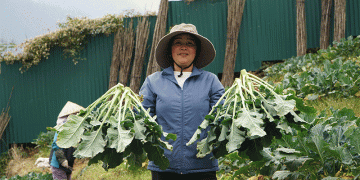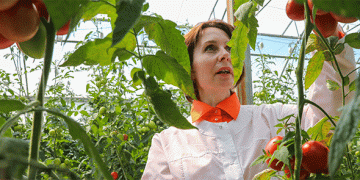In the province of Almería, Spain, a significant drop in the average auction price of Almería-type cucumbers has been observed. From a high of €0.90/kg in late October 2023 (Week 44), the price fell gradually each week to just €0.28/kg by November 26. This represents a sharp 69% decrease in less than five weeks, far below the production cost of €0.50/kg reported for the 2022/23 season.
Price Trends Over the Period:
- Week 44 (Oct 28–Nov 2): €0.90/kg
- Week 45: €0.84/kg
- Week 46: €0.59/kg
- Week 47: €0.35/kg
- Nov 26: €0.28/kg
The season had started optimistically in early September at €1.01/kg, further highlighting the extent of this market downturn.
Broader Market Context
The cucumber market has faced unique pressures globally, influenced by fluctuating demand, production costs, and climate challenges:
- Global Inflation and Rising Costs
In Europe, high energy, fertilizer, and labor costs have strained producers. While prices for cucumbers in other regions like Italy and France have increased due to these factors, Spanish producers in Almería are grappling with oversupply and stiff competition from Dutch and Moroccan imports, which are often cheaper to produce. - Weather-Related Challenges
The summer heat in Almería caused production inefficiencies, such as increased irrigation needs and pest issues. This, coupled with delayed planting in the Netherlands to reduce energy costs, has disrupted traditional market patterns. - Demand and Consumer Behavior
Consumer demand remains volatile. Countries like Germany, the UK, and the Nordic region have sustained their import levels, but global inflation has tempered spending habits. Buyers are becoming price-sensitive, which compounds challenges for higher-cost producers like those in Almería.
Implications for Farmers
For growers in Almería, the current market scenario is unsustainable. With production costs of €0.50/kg, selling at €0.28/kg generates significant losses. The situation necessitates a strategic response, such as:
- Enhancing efficiency through technology adoption.
- Collaborating with cooperatives to stabilize prices.
- Diversifying into higher-margin varieties or organic cucumbers, which maintain robust demand globally.
The Almería cucumber crisis reflects broader structural issues in global agriculture: rising costs, climate vulnerability, and shifting demand dynamics. Farmers, agronomists, and policymakers must collaborate to address these challenges, ensuring both sustainability and profitability for producers.































